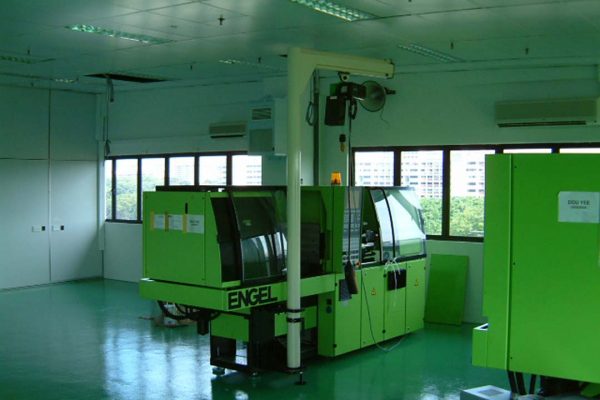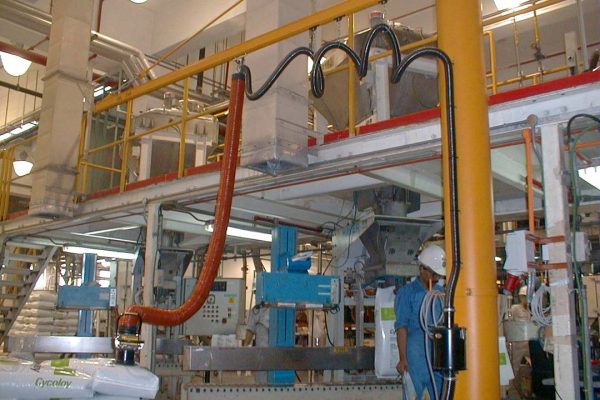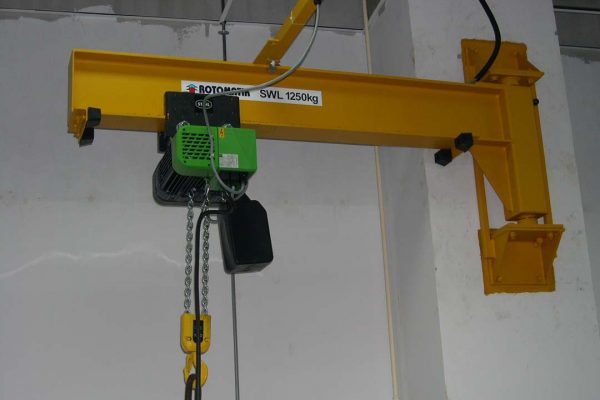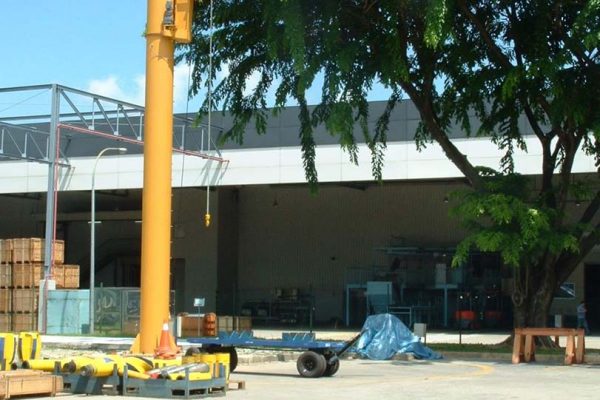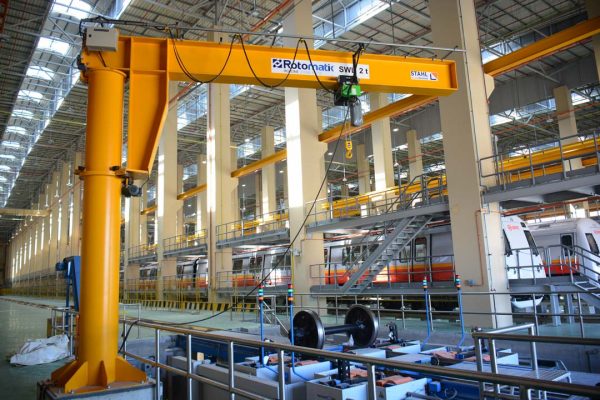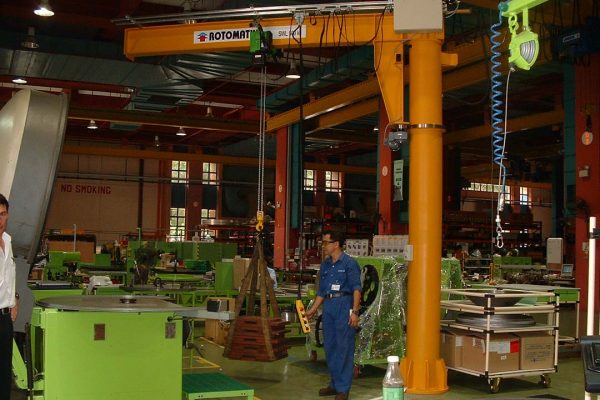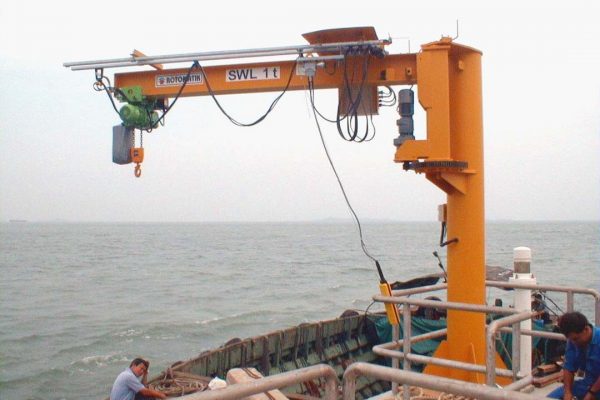Jib cranes or slewing jibs are very efficient for spot loading activities. Such applications include assembling and repair of pumps, valves and motors amongst others. These can also be used in loading and unloading of cargo onto trucks / lorries in small & medium warehouses.
Special uses of slewing jib cranes can be found in marina areas to lift boats on and off waters.
The specifications are:
- SWL ranges from 125kg to 10t
- Arm length up to 7m
- Motorised or manual arm
- Slewing angle ranges from zero to 360 degrees
Click here to view applications of slewing jib cranes:Rotomatik Jib Cranes
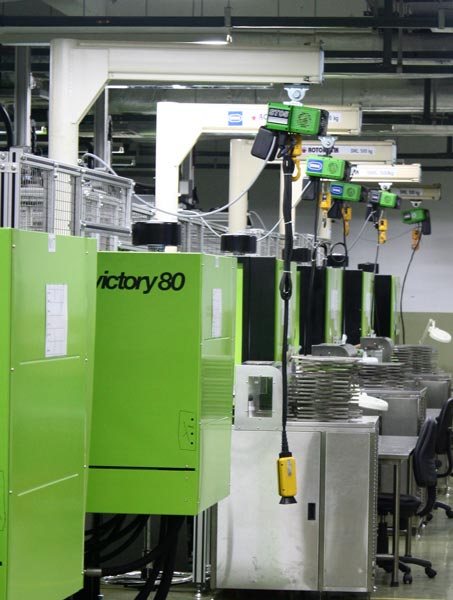
For lifting loads up to 1t and with a short arm length of 7m, these economical slewing jib crane lifting solutions are useful for less intensive hoisting activities.
The slewing jib cranes can rotate up to from zero to 360 degrees.
The hoist is usually a lower capacity electric chain hoist with a manual carriage.
The lower capacity slewing jib cranes facilitates the quick installation & commissioning without compromising safety standards.
The distinct features are:
- Computerised design to minimise size of pillar and arm without compromising safety
- Arm are constructed such that it does not dislodged during hoisting
- Arm are designed to ensure it is parallel to floor and aligned by experienced engineers to ensure ‘zero drift’
- Bolts and floor plate are designed to ensure they bear the inertial force
When lifting loads exceed 1t and longer arm lengths, and operational needs demand a high frequency of liftings then motorised jib cranes are the optimal solutions.
Unlike the manual jib cranes, the motorised slewing jibs can rotate from zero to 360 degrees.
For higher capacity slewing jib, the hoist is often an electric wire rope hoist or an electric chain hoist and with an electric carriage. At large loads, it is unsafe to manually move and stop a load greater than 1t.
The distinct features are:
- Computerised design to minimise size of pillar and arm without compromising safety
- Cross travel limit switches to prevent hoist hitting the end of arm’s beam
- Arm are constructed such that it does not dislodged during hoisting
- Arm are designed to ensure it is parallel to floor and aligned by experienced engineers to ensure ‘zero drift’
- Bolts and floor plate are designed to ensure they bear the inertial force

